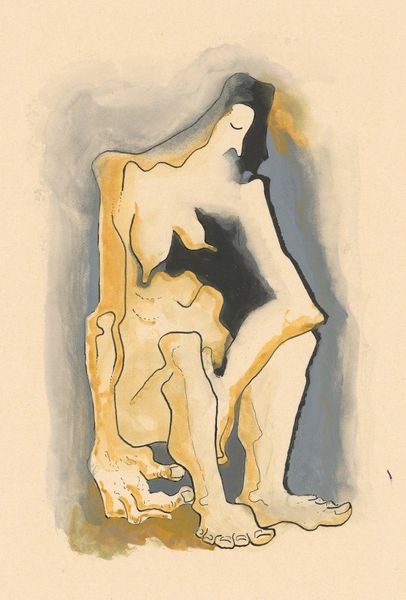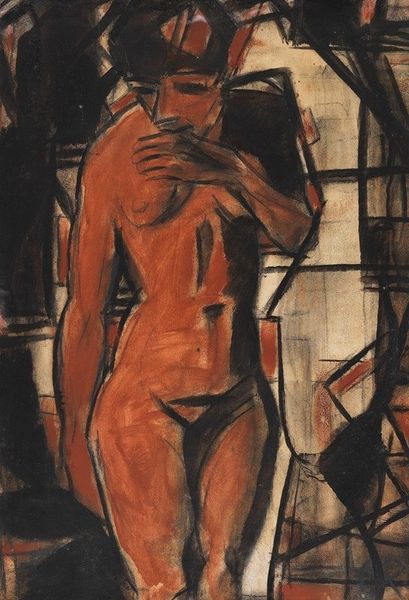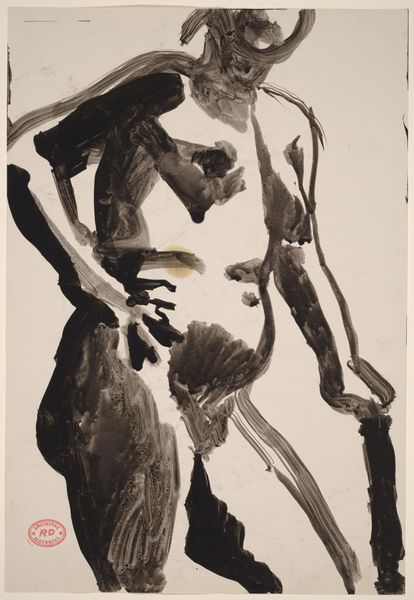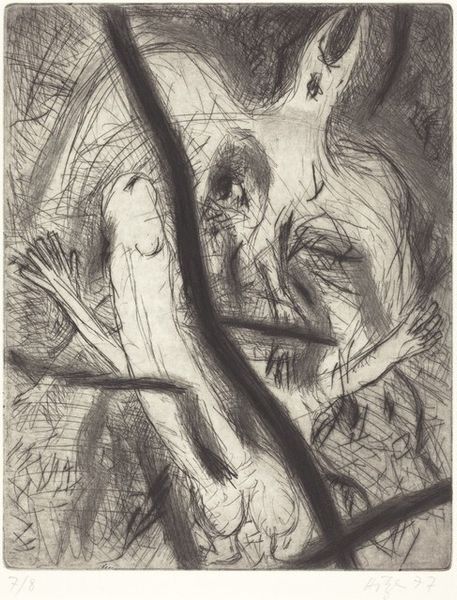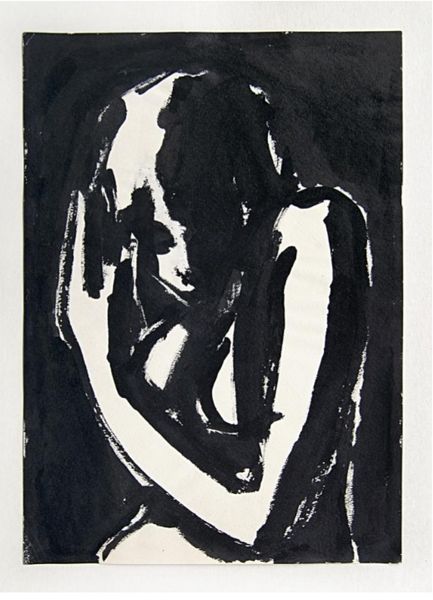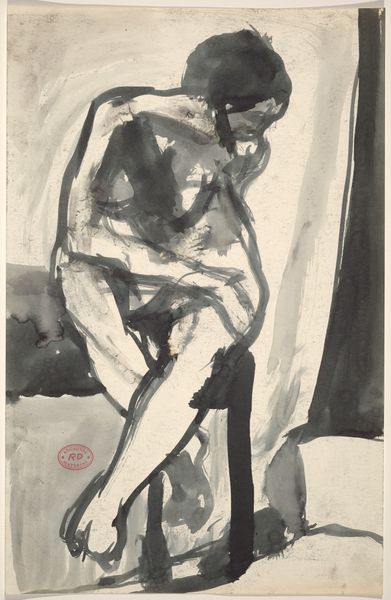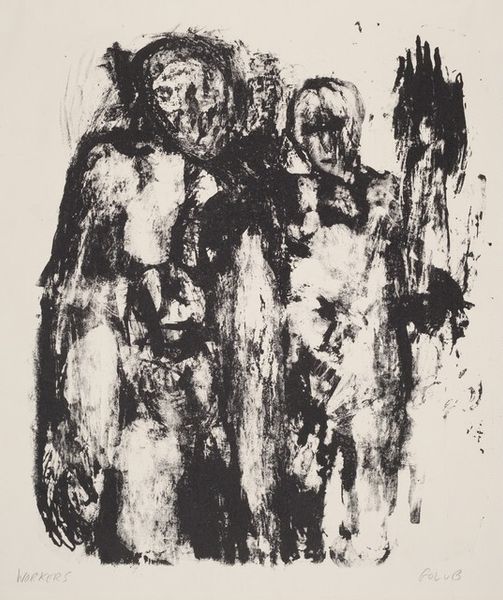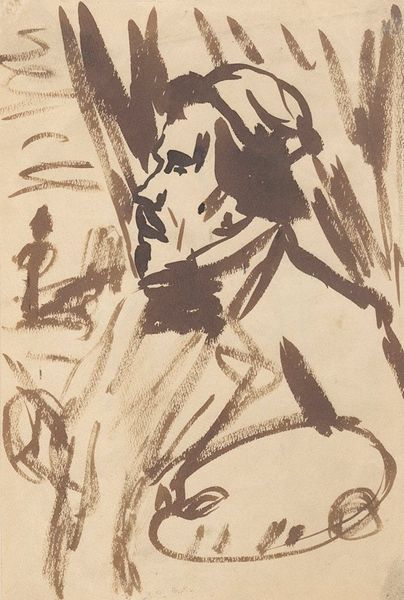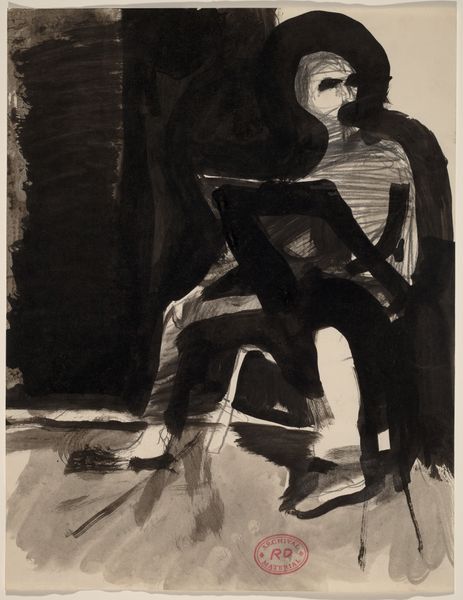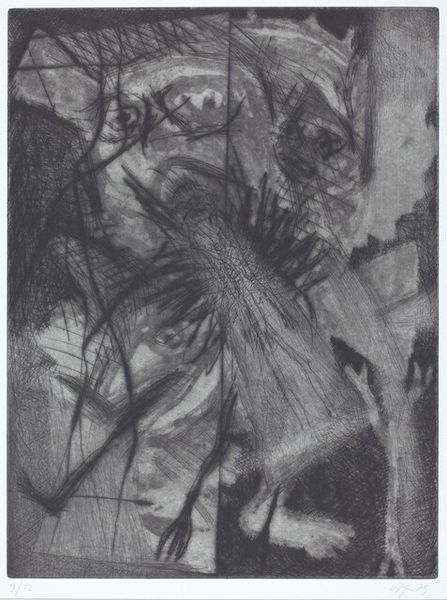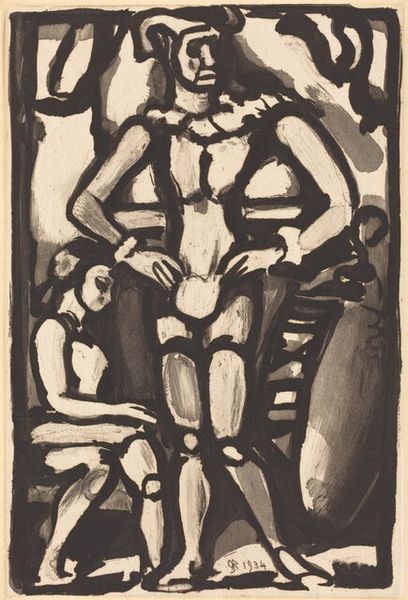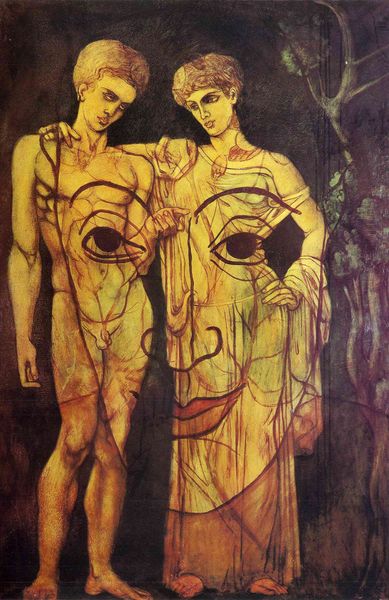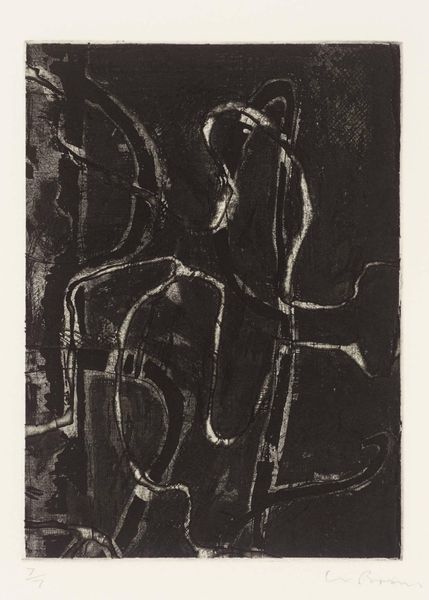
Dimensions: support: 260 x 197 mm
Copyright: © Tate | CC-BY-NC-ND 4.0 DEED, Photo: Tate
Editor: This intense, small-scale ink wash, "Players" by David Bomberg, feels almost like a stage set. How do you see the relationship between process and meaning here? Curator: The stark contrasts and angular forms speak to the industrial processes shaping early 20th-century life. Bomberg uses cheap materials, like ink on paper, perhaps reflecting the disposable nature of labor within an increasingly mechanized society. Do you see how the lack of detail reduces the figures to mere cogs? Editor: That's a compelling point. It's like the individuals are swallowed by the system. I hadn't considered the material implications of that. Curator: Consider the rapid, almost violent application of ink. It mimics the pace and aggression of modern production. Editor: It’s given me a new way to see the connection between art, labor, and materials. Thanks! Curator: Agreed! Examining these connections is crucial for understanding the work's impact.
Comments
Join the conversation
Join millions of artists and users on Artera today and experience the ultimate creative platform.
tate 8 months ago
⋮
Bomberg served in the Royal Engineers between 1915 and 1918. This is one of a series of drawings on Army stationary that he made in 1919. The subject is actors or players on stage at the Pavilion Theatre in Whitechapel. 'Players' was one of the themes comprising the series. According to the artist the series was 'done in twelve parts, each part having twelve variations, each drawing was based on one of twelve patterns, the key to the whole. Each drawing had to be different; one might be groups of fishermen and nets, the other Ballet scenes or dancers'. In these works Bomberg set out to 'prove that form plays one part, content another. Both can operate within one another but [remain] basically unrelated'. Gallery label, September 2004
